For the adventurous traveler, the Choquequirao Trek offers a rare chance to explore the mystical ‘Lost City of the Incas.’ This 5-day remote excursion takes trekkers through stunning mountain landscapes, culminating in guided tours of the expansive and well-preserved Choquequirao archaeological site. Ongoing excavations continue to uncover new sectors of this isolated Inca citadel, providing a unique insight into the remarkable engineering and architectural feats of the Inca civilization. Those who undertake this journey will not only witness the ruins but also gain a deeper understanding of the final days of the Inca empire.
This experience made our list of the 4 Best Treks And Hiking Tours In Peru.
Key Points
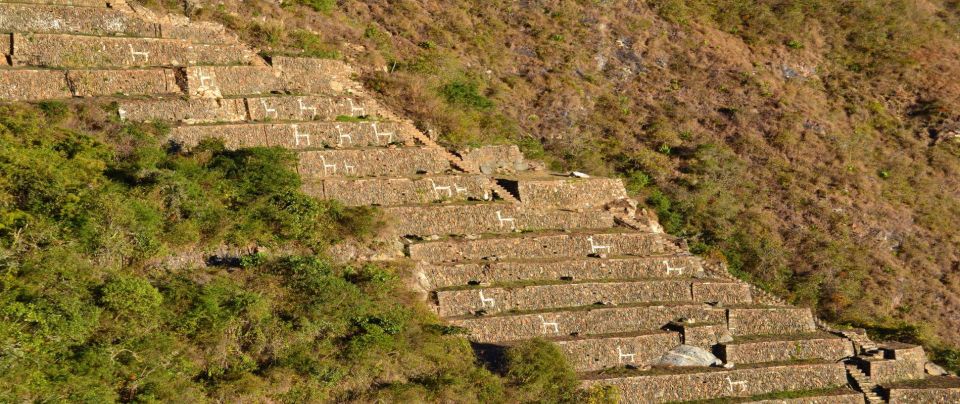
- Choquequirao is a remote and rarely visited ‘lost city of the Incas’ undergoing ongoing archaeological excavations to uncover new sectors of the ancient citadel.
- The 5-day Choquequirao trek offers adventurous travelers a unique glimpse into the final days of the Inca empire with full immersion in the site’s mystique and grandeur.
- The trek includes a 4-hour ascent to Maranpata, a full-day exploration of the expansive Choquequirao archaeological site, and a strenuous uphill climb to the Chiquisca campsite.
- Trekkers can observe well-preserved Inca ruins and unique architecture, providing insights into the rich history and culture of the Inca civilization.
- The trek includes private transportation, entry fees, camping gear, meals, and an English-speaking guide, with optional trekking pole and horse rentals available.
Trek Overview

The Choquequirao trek is a remote and rarely visited excursion to the ‘lost city of the Incas’, one of the last refuges for Incas who continued to resist the Spanish conquest.
Archeologists continue to uncover new sectors of this ancient Inca citadel, which is situated high in the Andes mountains.
The trek itself spans 5 days, allowing trekkers to fully enjoy the mystique and grandeur of this isolated archaeological site.
Despite its remote location, Choquequirao offers a unique glimpse into the final days of the Inca empire, making it a sought-after destination for adventurous travelers seeking to explore Peru’s rich cultural heritage.
You can also read our reviews of more hiking tours in Peru
Day-By-Day Itinerary
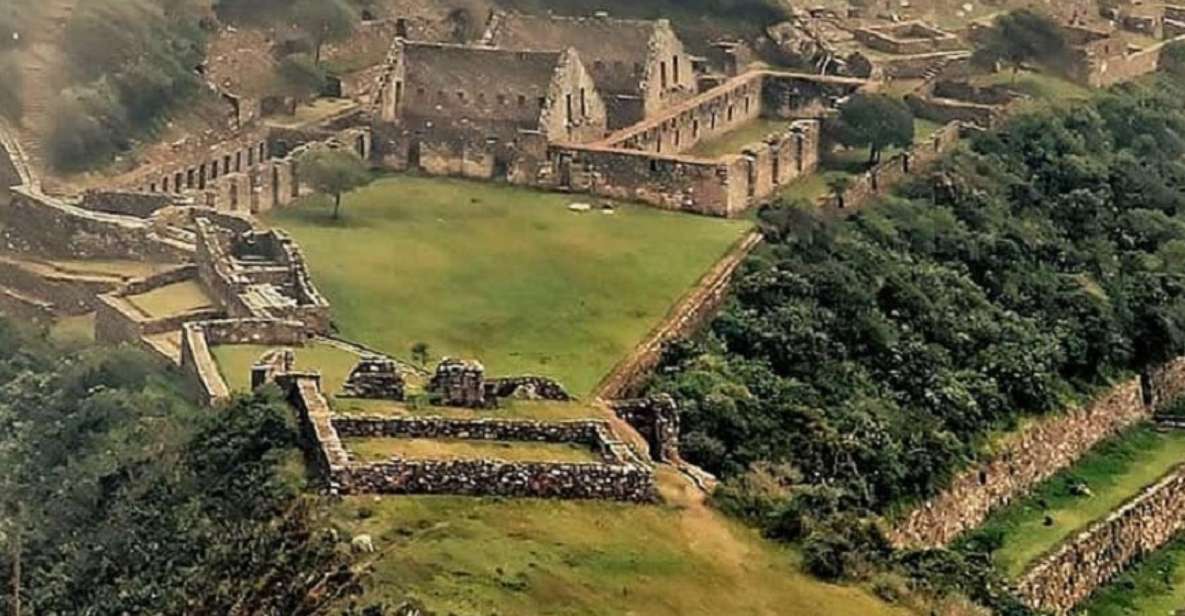
The Choquequirao trek unfolds over 5 days, allowing trekkers to fully enjoy the archaeological wonders of this remote and rarely visited Inca citadel.
On day 1, travelers embark on a 4-hour drive from Cusco to Capuliyoc, situated at an elevation of 3100 meters, before commencing a 3-hour hike down to Chikisca and then 2 additional hours to reach the Playa Rosalinas campsite.
The next day, hikers ascend for 4 hours to Maranpata for lunch, then continue for 20 minutes to the Choquequirao campsite.
Day 3 is spent exploring the impressive Choquequirao archaeological site in depth.
On day 4, trekkers descend to the Apurimac River before climbing up to the Chiquisca campsite.
The final day involves a 3-4 hour hike back to Capuliyoc and a 5-hour drive to Cusco.
Day 1: Cusco – Capuliyoc – Playa
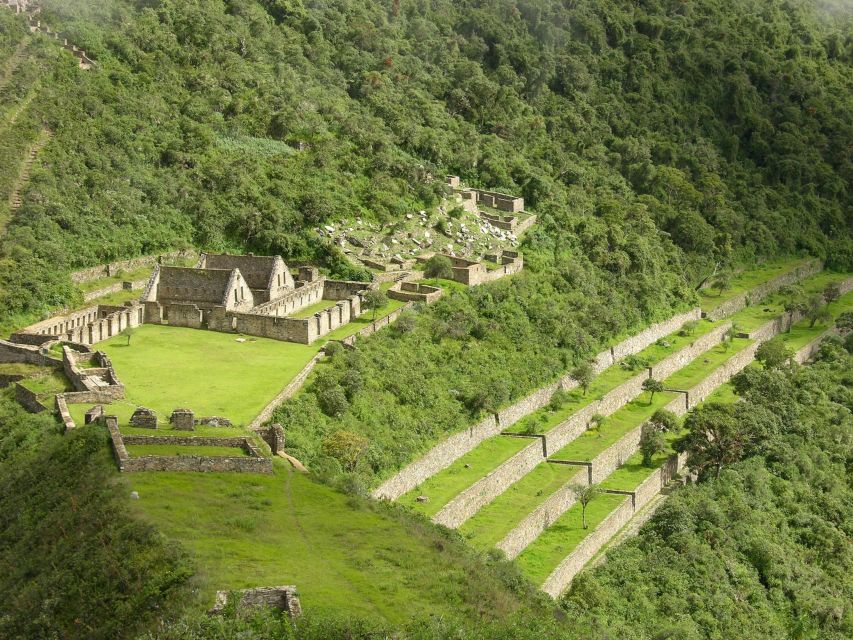
On the initial day of the Choquequirao trek, trekkers depart from Cusco and make the 4-hour drive up to the trailhead at Capuliyoc, situated at an elevation of 3100 meters. From there, they embark on a 3-hour hike downhill to Chikisca, followed by an additional 2-hour descent to reach the Playa Rosalinas campsite. This first day’s journey covers a significant amount of terrain, both in terms of distance and elevation change. To help prepare trekkers for the challenges ahead, the trek outfitters provide the following essential information:
| Metric | Imperial |
|---|---|
| Distance: 15 km | 9.3 mi |
| Elevation Loss: 1580 m | 5184 ft |
| Avg. Time: 5 hours | 5 hours |
| Campsite Elevation: 2250 m | 7381 ft |
Day 2: Playa – Maranpata – Choquequirao
After a restful night at the Playa Rosalinas campsite, trekkers embark on the second day’s journey, hiking 4 hours uphill to reach the Maranpata lunch spot.
From there, they continue for 20 minutes to arrive at the Choquequirao campsite, where they’ll spend the night.
The hike up to Maranpata offers stunning views of the surrounding mountains and valleys.
Once at the campsite, trekkers can explore the nearby Choquequirao archaeological site, one of the last strongholds of the Inca Empire. With its well-preserved ruins and unique architecture, Choquequirao provides a glimpse into the rich history and culture of the Inca civilization.
More Great Tours NearbyDay 3: Choquequirao
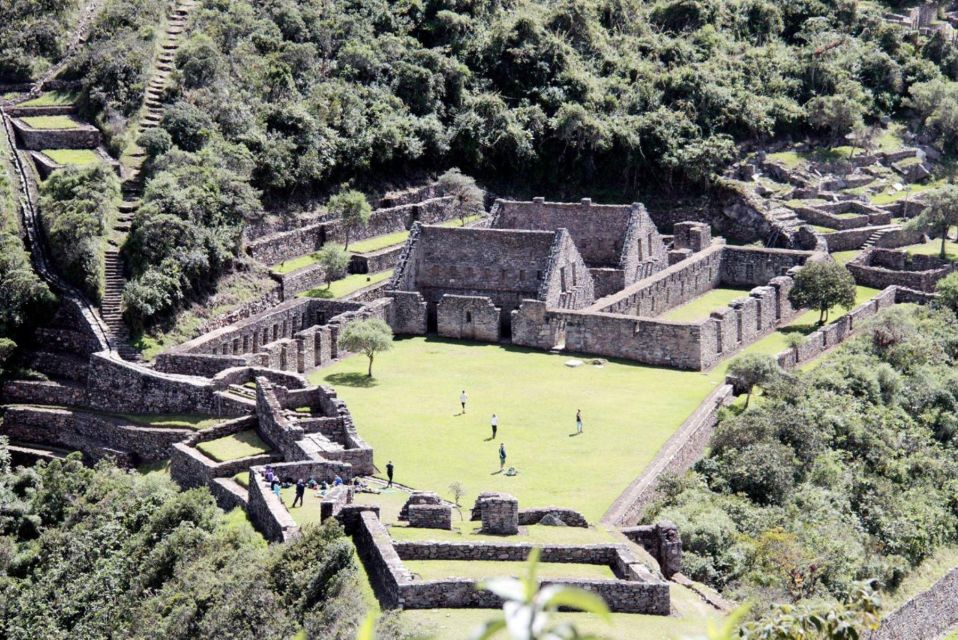
Trekkers devote an entire day to exploring the expansive Choquequirao archaeological site, marveling at its well-preserved Inca ruins and unique architectural features that offer a glimpse into the rich history and culture of the Inca civilization. Guided tours provide in-depth insights into the various sectors of the site, including the Main Plaza, Ritual Baths, Storage Rooms, and Religious Temples. Visitors can observe the ingenuity of Inca construction techniques, such as the intricate stone masonry and water management systems. Throughout the day, trekkers have ample time to wander, photograph, and truly enjoy the captivating atmosphere of this remote and enigmatic "lost city of the Incas."
| Sector | Key Features | Significance |
|---|---|---|
| Main Plaza | Expansive open space, surrounded by administrative and religious structures | Center of economic and political activity |
| Ritual Baths | Elaborate bathing and cleansing facilities | Ceremonial practices and purification rituals |
| Storage Rooms | Large stone structures for storing food and supplies | Testament to Inca efficiency and logistics |
| Religious Temples | Precisely engineered temples and shrines | Manifestation of Inca spirituality and cosmology |
Day 4: Choquequirao – Chiquisca
Having fully immersed themselves in the captivating splendor of Choquequirao the previous day, the trekkers now embark on their descent towards the Apurimac River before commencing the arduous climb to Chiquisca campsite.
The descent to the river at 1520m/4986ft is a challenging but scenic hike through the lush, verdant landscape. After reaching the river, the group must then tackle the strenuous uphill climb to Chiquisca campsite at 1950m/6397ft.
This ascent tests the trekkers’ endurance, but the stunning vistas and sense of accomplishment make the effort worthwhile. With each step, the group draws closer to their ultimate goal of returning to Cusco, having experienced the enchanting wonders of Choquequirao.
Day 5: Chiquisca – Cusco
With the Choquequirao trek nearing its conclusion, the trekkers embark on the final stage of their journey, hiking 3-4 hours up to Capuliyoc before making the 5-hour drive back to Cusco.
The morning hike up to Capuliyoc is a grueling climb, but the stunning views of the surrounding mountains provide a rewarding payoff.
After reaching the trailhead, the group piles into the private transport for the long but scenic drive back to Cusco.
This final leg of the trek allows the travelers to reflect on their incredible experience exploring the remote and rarely visited ‘lost city of the Incas‘ that’s Choquequirao.
As the trek comes to an end, the trekkers feel a sense of accomplishment and appreciation for this remarkable journey.
Inclusions and Rentals
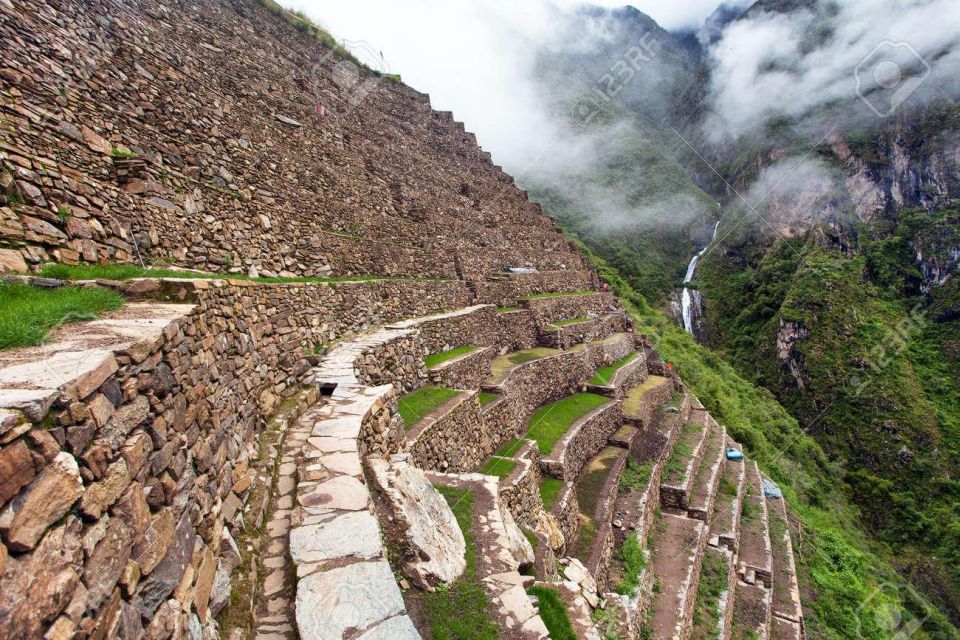
The Choquequirao trek package includes a range of essential services and equipment to support trekkers throughout their journey, from private transportation to Cusco and entry fees to the archaeological site, to camping gear and meals provided by the tour operator.
An English-speaking guide accompanies the group, offering expert insights during private guided tours of the Choquequirao ruins.
For added convenience, the package also includes an emergency horse. Trekkers are allotted 7 kg for personal items, and they can optionally rent trekking poles or book additional horses to carry extra luggage.
While travel insurance isn’t included, the package provides a comprehensive set of inclusions to ensure a comfortable and well-supported trekking experience.
Frequently Asked Questions
What Is the Best Time of Year to Do the Choquequirao Trek?
The best time to do the Choquequirao trek is during the dry season, from May to September. This offers the most favorable weather conditions and avoids the rainy season, making the trek more enjoyable and accessible.
Can I Do the Trek Independently Without a Guide?
While it’s possible to do the trek independently, it’s generally not recommended. Hiring a guide provides essential logistical support, expertise, and safety, making the experience much more enjoyable and manageable for most trekkers.
What Is the Average Temperature at the Campsites?
The average temperature at the campsites along this trek typically ranges from around 10°C (50°F) at night to 20°C (68°F) during the day. Temperatures can vary depending on the elevation and weather conditions.
Are There Any Restrictions on the Amount of Luggage I Can Bring?
There’s generally a limit on personal luggage for trekkers, typically around 7kg. Hikers should check with the tour operator, as any excess weight may require renting additional pack animals or porters to carry the extra gear.
What Type of Physical Fitness Is Required for the Choquequirao Trek?
The Choquequirao trek requires a high level of physical fitness. Trekkers should be able to hike for 5-7 hours per day over steep terrain at high altitudes. Significant cardio and leg strength training is recommended to complete this challenging multi-day trek.
Recap
The Choquequirao Trek offers a unique opportunity to explore the ‘Lost City of the Incas’ and gain insight into the final days of the Inca empire.
This remote 5-day excursion through stunning mountain landscapes culminates in extensive guided tours of the expansive and well-preserved Choquequirao archaeological site, where ongoing excavations continue to uncover new sectors of this isolated Inca citadel, providing a rare glimpse into the remarkable engineering and architectural feats of the Inca civilization.
You can check availability for your dates here:More Hiking & Trekking Tours in Peru
More Tour Reviews in Peru
- Tingo María: Boating on Laguna Milagros – Miracles Lagoon
- Mancora: Puerto Pizarro – Tour Mangrove Mysteries
- Tingo María: Boating on Laguna Milagros – Miracles Lagoon
- 4-Hours Horse Riding, Inca Pyramids in Worlds Largest Dry Forest
- Full Day Tour to Uros and Amantani Islands
- The Coffee Route in the Central Forest 3 Days 2 Nights
Not for you? Here's more nearby things to do in Peru we have reviewed
- From Paracas: Ballestas Islands tour all Inclusive
- From Cusco: Vinicunca Rainbow Mountain ATV Tour with Meals
- Cusco: 7 Lagoons of Ausangate Full Day
- Lima: Food Tour with History, Culture, and Local Cuisine
- Lima: guided tour of a nature reserve on the Rimac River
- Lima: Magical water and laser show
- Tingo María: Boating on Laguna Milagros – Miracles Lagoon
- Mancora: Puerto Pizarro – Tour Mangrove Mysteries
- Tingo María: Boating on Laguna Milagros – Miracles Lagoon
- Humantay Lake 1 Day Tour Review
- Private Machu Picchu 1 Day Tour From Poroy Cusco
- El Yunque Green Trail Day Excursion With Transport
